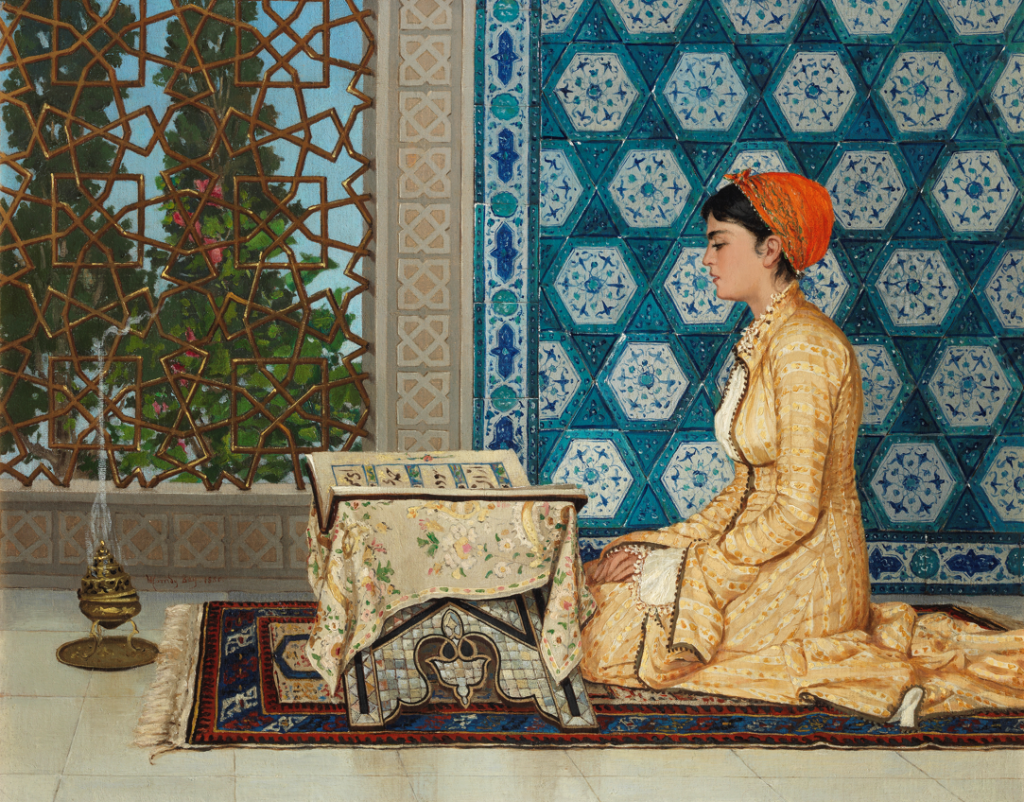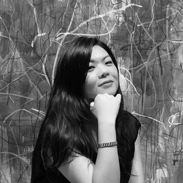It may be a relatively small category, eclipsed by the record-breaking sales of contemporary art that dominate the headlines, but Orientalist art has been making a quiet comeback in recent years. The market is becoming increasingly competitive, with bidders coming from the wider Islamic world stretching to as far as Southeast Asia.
Sotheby’s, Christie’s and Bonhams—the three auction houses that offer Orientalist art as a standalone category in London—said they are seeing a renewed interest in this category. And the surge in demand joined with the lack of supply point to a booming future for this genre in terms of prices.
“We anticipate continued strong interest and participation from both private and institutional buyers from across the Islamic world, from Morocco in the west to SE Asia in the east,” Claude Piening, head of Sotheby’s 19th Century European paintings department in London, told Artnet News. An earlier sale in October saw Asian buyers contribute to 30 percent of the total aggregate spend, Sotheby’s said.
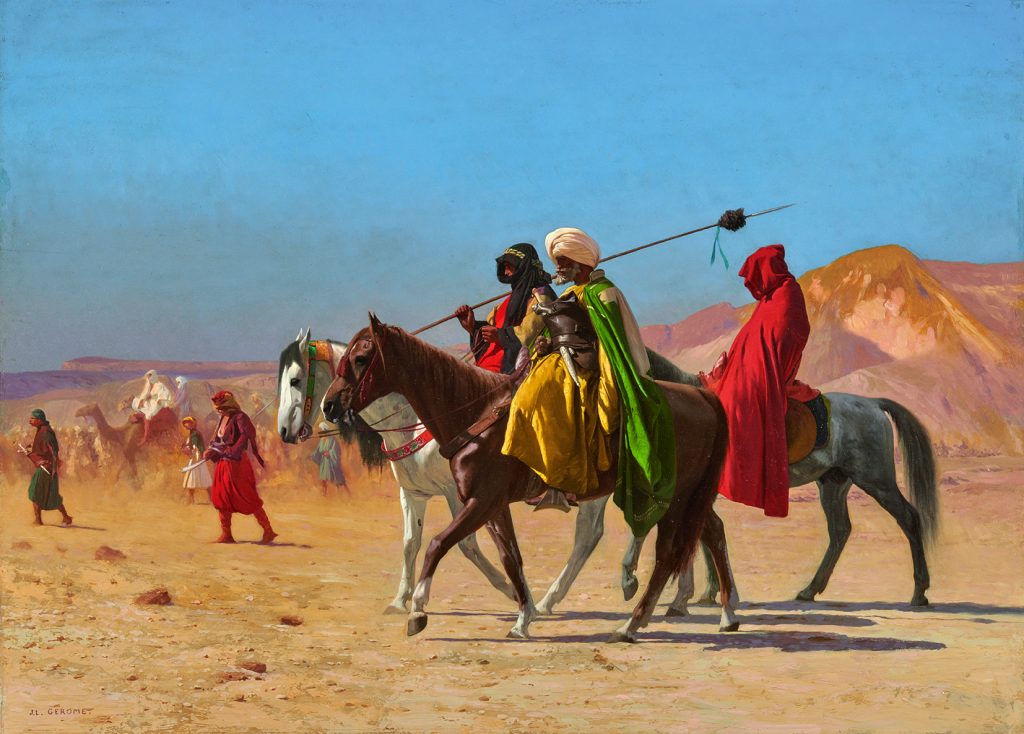
Jean-Léon Gérôme, Riders Crossing the Desert (1870). Courtesy of Sotheby’s.
Orientalist art refers (mostly) to paintings depicting areas such as the Middle East, North Africa, Turkey and the Gulf, and it has long been one key sub-sector of the 19th-century European paintings market. The works are mostly figurative, colorful paintings that contain great detail, portraying regional landscapes and people’s day to day lives. However, how much these portraits are historically truthful is debatable, since many artists who belong to this category are known as “armchair Orientalists,” painting images out of their imaginations or based on romanticized accounts of the area.
For many years, in fact, the term “Orientalist” carrier a bad reputation, and was seen politically incorrect in the post-colonial era, owing to Edward Said’s critical analysis. “The Orient was almost a European invention,” Said wrote in his landmark book Orientalism, first published in 1978, “a place of romance, exotic beings, haunting memories and landscapes, remarkable experiences.” Orientalism “connotes the high-handed executive attitude of nineteenth-century and early twentieth-century European colonialism,” Said added.
Perhaps as a result, commentators in the 1970s “thought that [Orientalist] works were outmoded, colonialist and patronizing,” said Charles O’Brien, Bonhams’ director of 19th-century paintings.
But such a view has gradually changed, O’Brien noted. “Orientalist art is now regarded as a celebration of Middle-eastern culture… As a genre, many of these works, which are rich in detail and beautifully painted, give an unparalleled visual insight into the culture.”
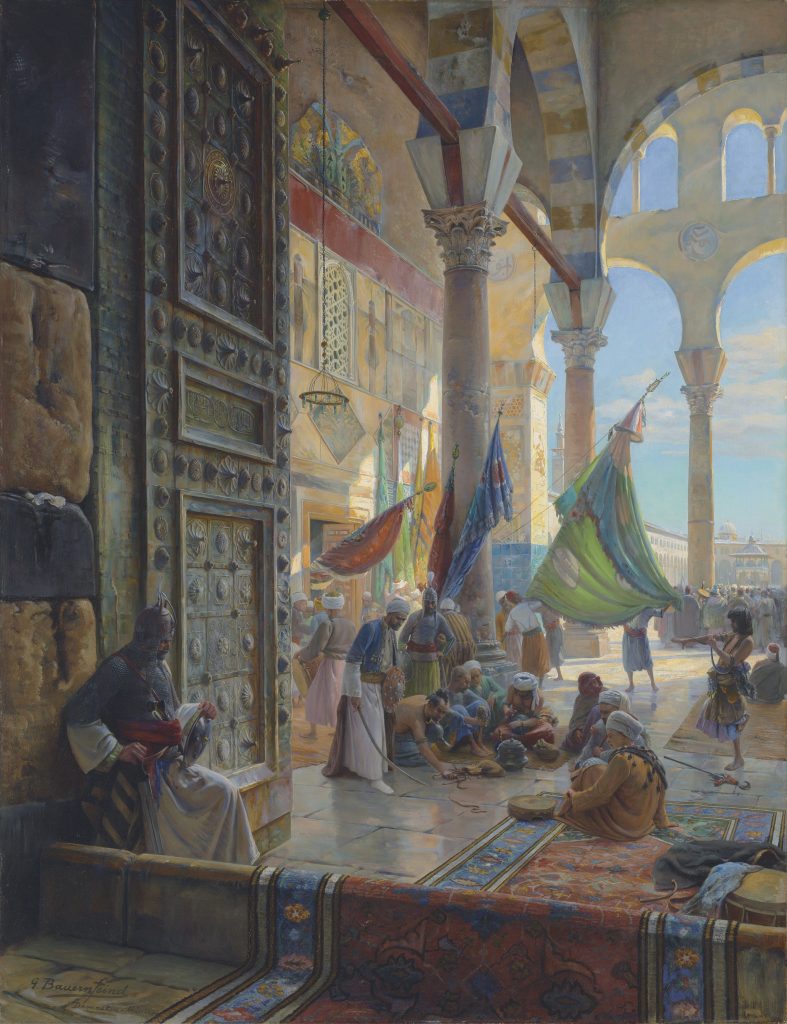
Gustav Bauernfeind Forecourt of the Umayyad Mosque, Damascuss (1890), top lot of Christie’s Orientalist art sale 2019. Photo: Christie’s Images Ltd.
Orientalism as an auction category has gone through various stages of development. Sotheby’s said it began to offer Orientalist artworks in the 1980s and an annual sale of this standalone category was introduced in 2012. Christie’s, on the other hand, offered standalone sales between 1998 and 2009. Then the works were offered alongside the 19th-century European art sales, until 2019 and 2020, where Orientalist art became a standalone sales category again. In 2021, Orientalist art was offered in private sales. Bonhams only began standalone Orientalist art sales in 2020.
Price figures assembled from Artnet’s database and sales totals for auctions point to a similar trend—it is not a particularly high-priced category but it is steady. Between April 2012 and April 2019, Sotheby’s sales total for this genre ranged from a low of £3.4 million in 2017 to a high of £6.3 million in 2013.
But sales spiked when 40 works from the Najd Collection came to Sotheby’s in October 2019, raking in £33.5 million (all prices include fees unless otherwise stated), a record total. The public auction of the trove assembled, according to the Telegraph, by Saudi billionaire Nasser Al-Rashid set many records for artists in this category. French artist Jean-Léon Gérôme’s 1870 painting Riders Crossing the Desert sold for more than £3 million, an artist record in British pounds, but only the second highest price after converting the total to $4 million in U.S. currency, based on the exchange rate at the time. Austrian Ludwig Deutsch achieved a record price of £4.3 million ($5.6 million) with the sale of The Tribute (1909).
In fact, 2019 was, without a doubt, a great year for Orientalist art. Christie’s set an auction record (in British Pounds) for German painter Gustav Bauernfeind with the sale of Forecourt of the Umayyad Mosque, Damascus (1890), sold for £3.6 million ($4.7 million). Bonhams sold Young Woman Reading (1880) by Ottoman artist Osman Hamdi Bey for a record £6.7 million ($7.8 million). A similar work by Bey, Young Emir Studying (1878), now hangs at the Louvre Abu Dhabi, though the work went unsold when it was offered in a 2012 Sotheby’s London sale.
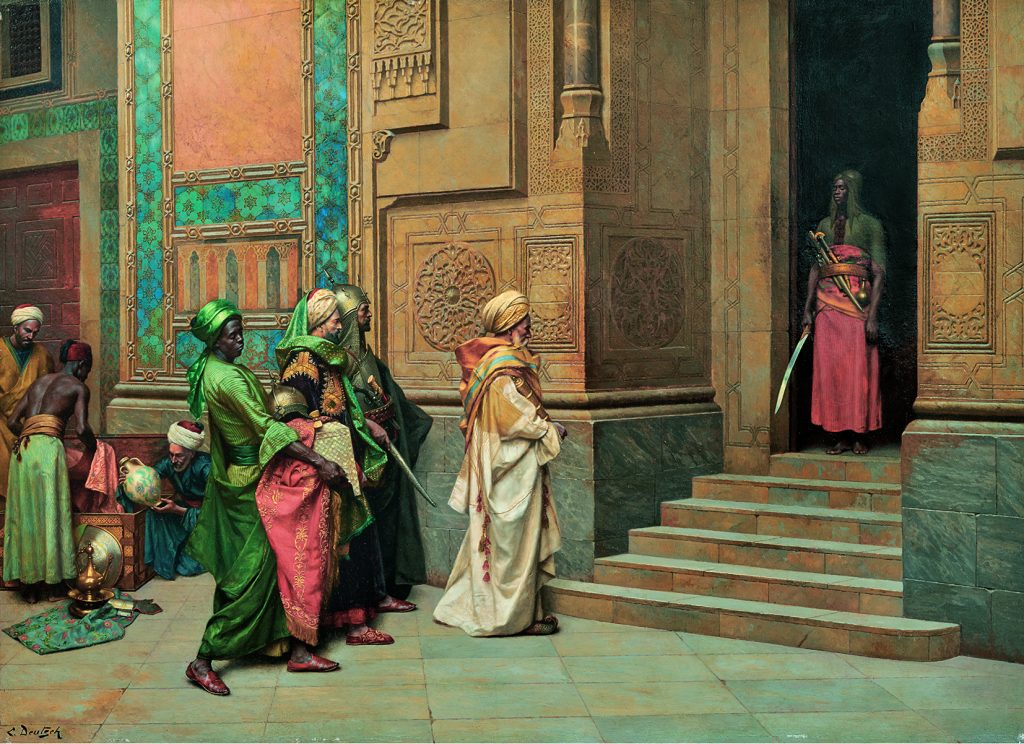
Ludwig Deutsch, The Tribute (1909). Courtesy of Sotheby’s.
Such a dramatic year shone a spotlight on the genre and prompted auction houses to rethink their strategy. Sotheby’s now hosts two Orientalist sales per year, instead of one annually. The annual total in 2020 (including a second part of the Najd collection sale) was £6.1 million ($7.8 million), and £6.3 million ($8.3 million) for 2021. And Bonhams launched a standalone Orientalist sale in 2020, which brought a total of £709,213 ($910,416). The total went up to £1.97 million ($2.6 million) in 2021.
Although these prices might seem like a drop from the 2019 peak, auction houses believe the market is experiencing a healthy development. “I disagree that the market has declined. It is more that the Najd sales in 2019-20 resulted in a once-in-a generation spike in the market on the account of the quality of this exceptional group,” Sotheby’s Piening said, emphasizing that the 2021 sales total was more than a 20 percent jump from 2018’s £5.2 million ($6.9 million) total.
But long before London jumped into the action, Orientalist works were already being sold at auctions in Doha and Dubai starting in the late to mid-2000s, alongside the museum boom in that region. Malaysia-based brothers, Syed Mokhtar Albukhary, chair of the Albukhary Foundation, and Syed Mohamed Albukhary, director of the Islamic Arts Museum Malaysia, have been actively supporting international exposure of art from this genre, including a significant sponsorship of the Islamic world gallery at the British Museum. And in 2019, French auction house Artcurial, which has been selling Orientalist paintings, opened a branch in Marrakech, Morocco.
“This is a very established market, buyers are looking for the best,” said Arne Everwijn, Christie’s European art senior specialist. “There is a lack of supply in this market; works tend to stay within collections for many decades [or] generations—most will never come back to the market.”
“Our collectors view Orientalist pictures as a window into their heritage in their 19th century—depictions of the day to day lives in the region at that time. These paintings—meant as a celebration in color and atmosphere by artists who immersed themselves in the culture—are a matter of pride to our collectors,” Everwijn noted.
